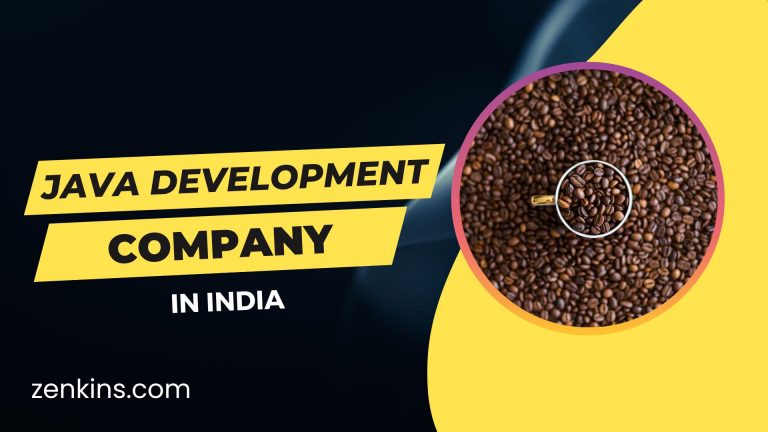Insurance Technology Trends Transforming the Industry in 2023
Insurance is an industry that has been around for centuries, but in recent years, it has seen a major transformation. The rise of insurtech, or insurance technology, has disrupted the traditional insurance industry and changed the way that insurance products are sold, underwritten, and serviced.
Join the Future of Insurance with Zenkins – Contact Us Now for Your Software Needs!
With emerging technologies and constantly evolving consumer expectations, insurance companies need to stay on top of the latest trends and developments to remain competitive. In 2023, we can expect to see some significant changes in the insurance industry as a result of new technologies and shifting consumer preferences. From artificial intelligence and machine learning to digital distribution channels and personalized experiences, insurance companies are exploring new ways to innovate and transform their businesses.
What’s Next in the Insurance Industry?
Insurance trends refer to the developments, patterns, and changes that occur within the insurance industry. These trends can include new technologies, changes in consumer behavior, shifts in the regulatory landscape, and emerging risks. The insurance industry is constantly evolving, and trends can impact how insurers do business, the products they offer, and the way they interact with customers. By understanding insurance trends, insurers can stay competitive and meet the evolving needs of their customers. Some examples of current insurance trends include the use of artificial intelligence and predictive analytics, the adoption of digital platforms, the rise of cybersecurity and fraud detection, and the increasing focus on customer experience.
The Future of Insurance Technology: Trends to Watch in 2023
Artificial Intelligence (AI)
Artificial intelligence (AI) is one of the most promising insurance technology trends for 2023. AI has the potential to transform every aspect of the insurance industry, from underwriting to claims management. For example, AI can help insurers to automate the underwriting process, by analyzing data from multiple sources, such as social media, credit scores, and health records. AI can also be used to improve claims management, by automating claims processing and providing real-time insights into claims trends and patterns.
Internet of Things (IoT)
The Internet of Things (IoT) is another insurance technology trend that is expected to transform the industry in 2023. IoT devices, such as sensors and wearables, can collect data on a wide range of variables, such as driving behavior, home security, and health status. This data can be used by insurers to develop more accurate and personalized insurance products. For example, auto insurers can use data from telematics devices to offer usage-based insurance, while health insurers can use data from wearables to offer wellness programs.
Blockchain
Blockchain is a distributed ledger technology that has the potential to revolutionize the insurance industry by increasing transparency, security, and efficiency. For example, blockchain can be used to automate claims processing and reduce fraud. It can also be used to create smart contracts that automatically execute when certain conditions are met, such as when a claim is filed.
Chatbots
Chatbots are computer programs that use artificial intelligence and natural language processing to simulate human conversation. Chatbots can be used to automate customer service, by answering common questions and providing personalized recommendations. Chatbots can also be used to facilitate claims processing, by providing real-time updates on claim status and resolving customer inquiries.
Big Data Analytics
Big data analytics is a technology trend that is transforming the insurance industry by providing insurers with powerful tools for analyzing large volumes of data. Big data analytics can be used to develop more accurate risk models, by analyzing data from multiple sources, such as social media, credit scores, and health records. It can also be used to develop more personalized insurance products, by analyzing customer behavior and preferences.
Cloud Computing
Cloud computing is a technology trend that is transforming the insurance industry by providing insurers with a flexible, scalable, and cost-effective way to store and process data. Cloud computing can be used to provide real-time access to data, by allowing insurers to store and process data in a centralized location. It can also be used to provide secure and reliable backup and disaster recovery solutions.
Mobile Technology
Mobile technology is a technology trend that is transforming the insurance industry by providing insurers with a convenient and accessible way to interact with customers. Mobile technology can be used to provide real-time access to policy information, by allowing customers to view and manage their policies from their smartphones or tablets. It can also be used to provide real-time updates on claims status, by allowing customers to track their claims from their mobile devices.
Digital Customer Experience
Digital customer experience is a technology trend that is transforming the insurance industry by providing customers with a seamless and personalized experience across all channels. Digital customer experience can be used to provide customers with personalized recommendations, by analyzing customer data and preferences. It can also be used to provide customers with real-time updates on claims status and policy information, by providing a seamless and consistent experience across all channels.
Robo-Advisors
Robo-advisors are automated investment platforms that use algorithms and artificial intelligence to provide financial advice and investment management services. In the insurance industry, robo-advisors can be used to provide customers with personalized insurance recommendations based on their individual risk profile and preferences. They can also be used to automate insurance policy selection and underwriting, allowing insurers to offer more personalized and efficient service to customers.
Cybersecurity
With the increasing use of technology in the insurance industry, cybersecurity has become an essential component of the industry. Insurers must protect their sensitive customer and company data from cyber-attacks, which can cause significant financial and reputational damage. In 2023, cybersecurity will continue to be a top insurance technology trend, with insurers investing in advanced security technologies and implementing robust security protocols to protect their data and systems.
Key benefits of insurance technology
- Improved Efficiency: Insurance technology can automate time-consuming tasks such as claims processing, policy management, and underwriting. This automation can help insurers process claims faster and more accurately, resulting in reduced costs and improved customer satisfaction.
- Enhanced Customer Experience: With the advent of insurtech, insurers can offer policyholders a more personalized and convenient experience. Policyholders can now easily access and manage their policies through mobile apps, chatbots, and other digital channels. Insurers can also leverage data analytics to offer customized products and pricing, resulting in a better overall customer experience.
- Fraud Detection: Insurtech can help insurers detect and prevent fraud more effectively. Advanced algorithms can analyze vast amounts of data to identify patterns and anomalies that may indicate fraudulent activity. This technology can help insurers reduce losses due to fraud and ensure that legitimate claims are paid out quickly and accurately.
- Cost Savings: Insurance technology can help insurers reduce costs associated with manual processes, paper-based documentation, and legacy systems. By automating tasks and using digital channels to communicate with policyholders, insurers can reduce their operating expenses and pass those savings on to their customers.
- Increased Agility: Insurtech can help insurers respond more quickly to changes in the market and customer needs. By leveraging advanced data analytics and machine learning, insurers can quickly adapt their products and pricing to meet changing market conditions. This agility can help insurers stay competitive and improve their bottom line.
Exciting Advances in Insurance Technology for the Future
The insurance industry has always been a complex web of data, statistics, and risk assessments. As technology continues to evolve, the industry must evolve as well to keep up with new trends and stay ahead of the game. In 2023, we expect to see several continuing technology trends in the insurance industry.
Predictive Analysis
First and foremost, we expect insurers to improve their use of predictive analytics. With the help of machine learning and AI, insurers can make more informed decisions in underwriting, claims, core processes, and other areas. However, deciphering the quality of data from the source, reducing data bias, and turning the opportunity for error into accuracy when forecasting the future remains a common challenge.
Fraud detection
The role of cyber security is always evolving and requires greater support at a leadership level. Cyber security experts can assist with risk management, providing a high level of security and trust with a strategic approach. Additionally, insurance fraud accounts for billions of dollars every year, so strides will continuously be made for better fraud protection solutions, such as proactively detecting fraud in claims processing.
Big Data
The role of drones capturing big data still needs definition in the insurance industry. While drone service has been used for several years where ease of access is needed for property or casualty situations that may be difficult to reach, the future of widespread drone use remains unclear due to regulations and costs. Furthermore, tools must continue to evolve to process big data when it is captured.
Telematics
We also expect to see an increase in telematics usage in 2023. Real-time insights instead of manual readings will only improve the relationship between vehicle operators and insurance products – primarily through better pricing that reward positive driving habits.
IoT for P&C insurance
The internet of things (IoT) continues to expand the possibilities for P&C insurance. Devices like smart sensors, smart homes, and wearable sensor technologies support risk assessment, fraud detection, and other areas around telematics and usage-based insurance (UBI). IoT devices also better support claims and often help to prevent issues before a claim and/or underwriting is needed.
Don’t wait, optimize your insurance operations with our technology – Get started now!
Insurance technology is transforming the insurance industry in 2023, with artificial intelligence, the Internet of Things, blockchain, chatbots, big data analytics, cloud computing, mobile technology, digital customer experience, robo-advisors, and cybersecurity all playing key roles in this transformation. These technologies offer insurers the opportunity to provide more personalized, efficient, and secure services to their customers, while also improving their own operational efficiency and profitability. As the insurance industry continues to evolve, it will be essential for insurers to embrace these technology trends and leverage them to stay ahead of the competition.




